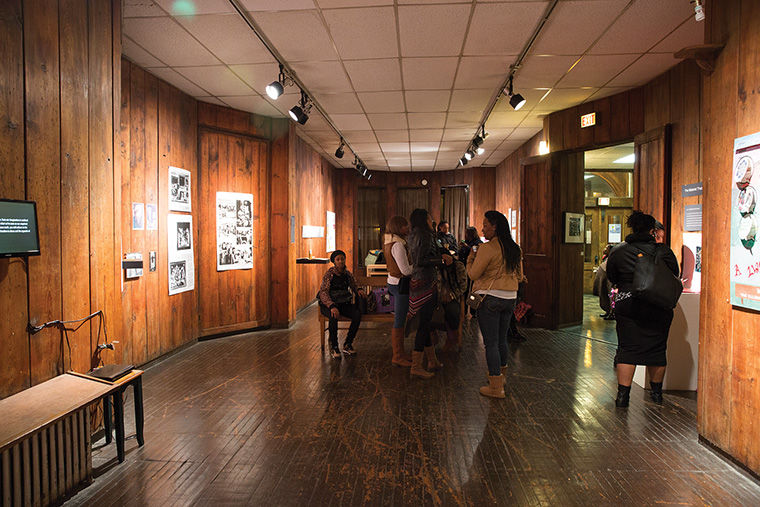Stateville prisoners share ‘The Materials that Went to Make’ them in art show
South Side Community Art Center, 3831 S. Michigan Ave., presents an exhibit of has art from inmates at Stateville Correctional Center in Crest Hill, Illinois
December 1, 2014
Works of art created by prisoners at the Stateville Correctional Center in Crest Hill, Illinois, are currently on display in an exhibition titled “The Material that Went to Make Me” at the South Side Community Art Center, 3831 S. Michigan Ave.
The exhibit includes drawings, writing, animation and audio works made by men who are currently incarcerated and were enlisted through a program with Prisons + Neighborhood Arts Project. Though the current program is in a large part the creation of Sarah Ross, the core organizer of the project, similar programs can be traced back to the late ‘60s. Margaret Burroughs, SSCAC board member and founder of the DuSable Museum of African American History, 740 E. 56th Place, was one of the first to provide art and black history courses in Illinois prisons, including the Stateville Correctional Center.
Masequa Myers, executive director of SSCAC, said Burroughs was passionate about bringing art into prisons because she was aware of the healing power that creative expression could have for inmates.
“What we do know is that art is transforming,” Myers said. “In nine cases out of 10, art is transforming in a positive way because we know that when a person is self-expressive, it allows another individual to understand. Even if they don’t agree, they can understand why certain choices were made. Art is healing, art is therapeutic, art fosters communication and all of those aspects are very important for us to live together in a way that is conducive—not destructive.”
Susan Imus, associate professor and chair of Columbia’s Creative Art Therapies Department, said the arts can be used as forms of expression and communication. Though the P+NAP program is not related to counseling or creative art therapy, the same benefits could still apply to the work made by prisoners, according to Imus.
“They use the different art modalities as a way to help people communicate their problems, their issues, their stressors in life,” Imus said. “This is true with any artistic media, so the artwork or the products are basically a part of the storytelling.”
A. Laurie Palmer, a volunteer with P+NAP and a professor of sculpture at the School of the Art Institute of Chicago who has given lectures to prisoners at the Stateville Correctional Center, said there could be some therapeutic value to the prisoners creating art, but that was never the mission of P+NAP.
“I do agree that there [are] many levels of our being involved with making art and writing that can be integrative,” Palmer said. “But I think there’s another way of thinking about it that is less about a therapeutic model than it is a relation to a collectivity, where you as an individual get to participate in something bigger than you.”
Palmer said the program is about giving prisoners a chance to share their humanity with the outside world.
“It’s not only about bringing teachers into the prison to work with the men inside,” Palmer said. “It’s also bringing the people outside into a relationship with the people who are inside and incarcerated with their humanity, with their being, their life.”
Myers said the range of the artistic projects—from writing to animations—sends an important message to those who may have an unfair opinion of people who are or have been imprisoned.
“It really makes one appreciate and understand that it doesn’t matter where you are or who you are,” Myers said. “It matters what you do with your time. Is it constructive? Does it have a purpose? Can you still benefit yourself and those that you come in contact with if you really make good use of your time?”







